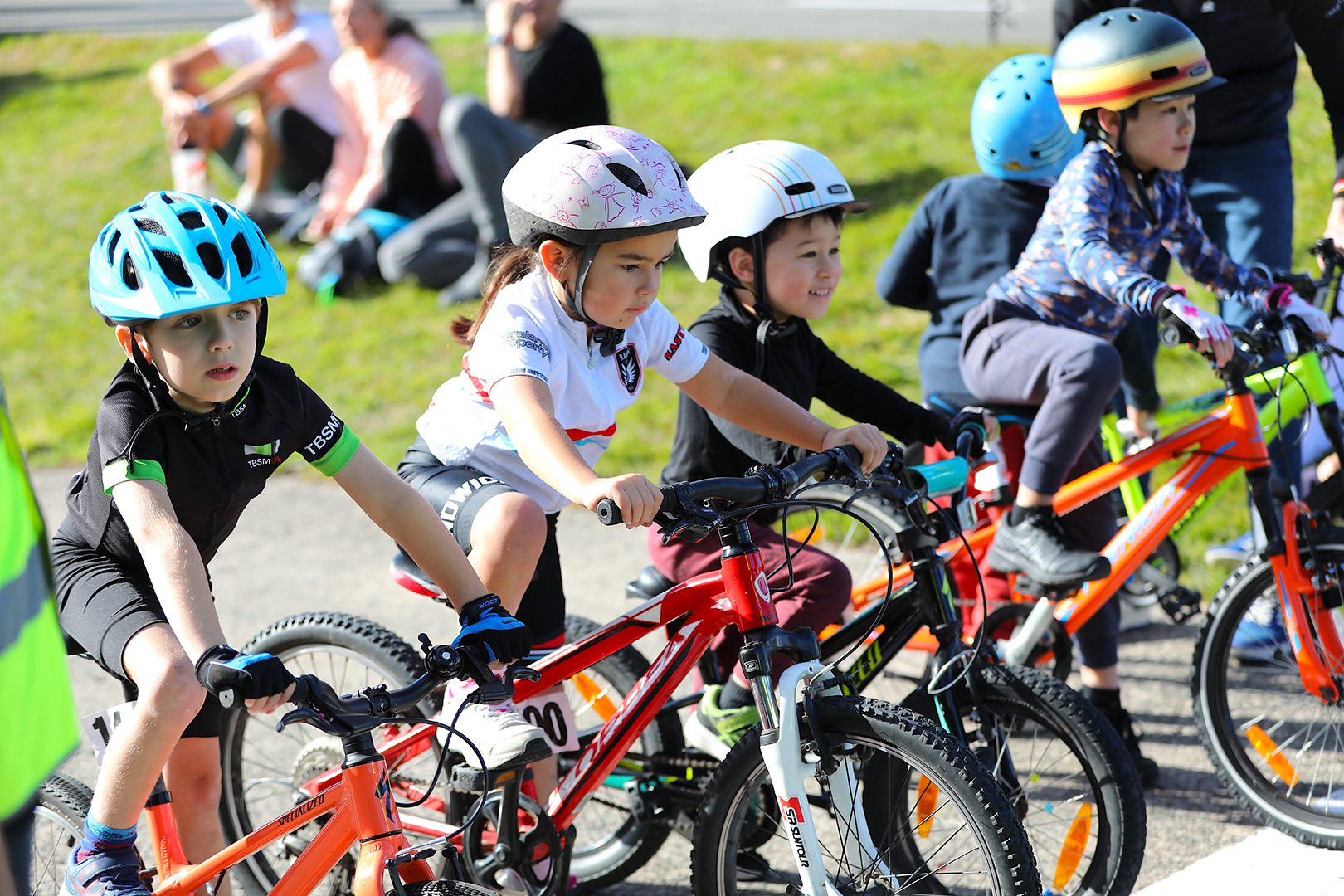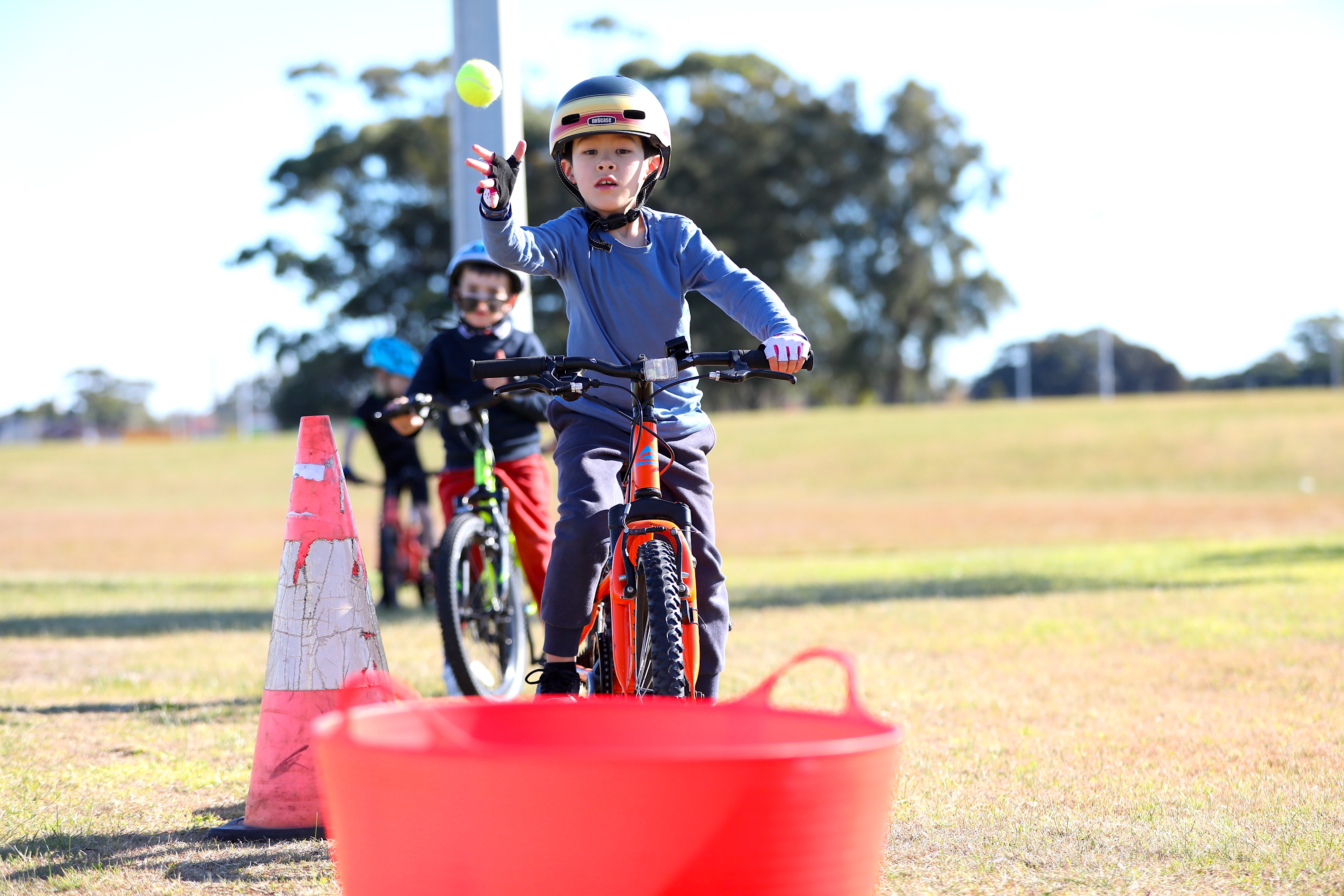So, you’ve heard about AusBike but want to know a little more about what exactly is involved before signing up your child.
Or you’ve taken the first steps and signed up but want to know what to expect and how to prepare for a session.
You’ve come to the right place. Here is a basic outline of what a typical First Gear session will look like.

AusBike by the numbers
5-12 years old: The age bracket AusBike is catered for.
Four: There are four ‘gears’ or levels in the AusBike program, with First Gear being suited for beginners, progressing to Fourth Gear for more advanced riders.
One-hour: There is one session per week ,which will last about one-hour.
Six-eight: the number of weeks in each program depending on the local centre.
10: the maximum number of kids in each session.
One: coach.
What your child will learn in First Gear

First Gear will teach your child the basics of riding a bike and equip them with the skills and knowledge to ride safely and avoid collisions in emergency situations.
Whether your child has just come off training wheels, or still a little nervous on two-wheels, First Gear will teach your child the skills to keep up on a family bike ride, on a bike path. Here are some skills your child will learn in First Gear:
- How to fit their helmet correctly.
- How to run a bike safety check.
- The Power Position - how to start a bike from a stand still.
- The Power Glide – how to move from pedalling fast to rolling without pedalling.
- How to brake safely in an emergency.
- How to signal left and right with their hands when the bike is stopped.
Welcome to the first session: Introductions

The first session of AusBike’s First Gear will ease your child into the program and is about helping them feel comfortable and have an enjoyable experience.
During the session the coach will cover a few basic skills, on and off-bike activities, incorporating education about bike parts as well as safety.
“The first 5 minutes we will do introductions and the coach will give an overview of what to expect over the next 50-55 minutes,” AusCycling’s Head of Methodology Brenton Jones said.
“It's a chance for a meet and greet too. As a coach, I like to get the conversation going by asking the kids some questions like where has your bike taken you, can you balance and ride in a straight line.
“At this time, there are a lot of shy kids, so I would like to engage the parents, getting them involved and letting them hear what we have to say and help support their children who might be nervous.”
Safety first

Then it's time for the all-important safety checks before any riding begins.
"We teach the kids the 2-2-2 making sure the helmet fits tightly under the ear and the chin, then above the eyebrow. And we check to make sure there are no cracks in the helmet,” Jones says.
Then it's time for a game – a helmet relay.
It's then time for the ABCDE bike check, and another game.
“We usually do a bit of bike twister, and have a bit of fun, getting the kids moving, and getting them understanding bike parts.”
The next activity is focused on understanding brakes and how they work.
“Being our first lesson, we spend a little bit more time on this and go back to our basics to say what is our left brake, what is our right brake, what does the front and what does back. It’s vital the kids understand how to top and stop safely before riding their bikes.
Riding is a balancing act: mixing fun, education and skills

Being able to balance on a bike is key to confident and safe riding, so the next activity will get the children riding in a straight line and cornering. There are a range of activities coaches may incorporate into this part of the session to help challenge the kids balance.
This might include off-bike activities such as jumping, balancing on one leg with their eyes closed etc, or throwing a bean bag into a bucket while they are on their bike to also test their coordination.
Jones says gamification is a big part of the program to help keep the kids engaged during the sessions.
“In the First Gear, we need that balance of fun and learning, and it's for their enjoyment as well. With many of the off-bike games, we have a lot of feedback from kids wanting to do it because they love it. It also breaks up the lesson, and it breaks up their concentration,” Jones says.
Then it's on to learning how to get on and off the bike, with some more fun and easy activities.
To finish, it’s time for another game that brings together everything the child has just learned.
“A coach might finish with a game of ‘instructor Says’, where we get the kids to ride around in a circle and the instructor says a word that the kids have to do. It could be, brake, stand up, it could be turn left, it could be turn right,” Jones says.
Wrapping up

“The last five minutes of the session are used to wrap up and review the session. We might ask some questions about how they found the first session, what they enjoyed, what they struggled with. It might be a good chance to bring the parents back into the conversation. Then we will give a brief preview of what will be covered in the next session,” Jones explains.
Homework
Just like learning any new skill, practice makes perfect. The more the children ride at home, in the driveway or backyard, the more improvements you will see.
“I sometimes like to give the kids some homework and encourage them to continue to practice their skills during the week.
“You see some kids who only do the session once a week, and generally their development may fall behind others who ride more often. Just 30 minutes more a week outside of the AusBike session program will make a difference.”
Developing your child into a confident and safe rider

By the end of eight sessions of First Gear, the aim is for your child to be able to ride their bike on their own unsupported and be confident in doing so.
But it’s important to remember, Jones says, not all children will progress at the same rate.
“It’s important to understand every child is different. Some kids may develop at a faster rate than others. At the end of the day the expectation is at the end of 8 weeks your child will have the confidence to ride by themselves and be able to stop safely on their own,” Jones said.
